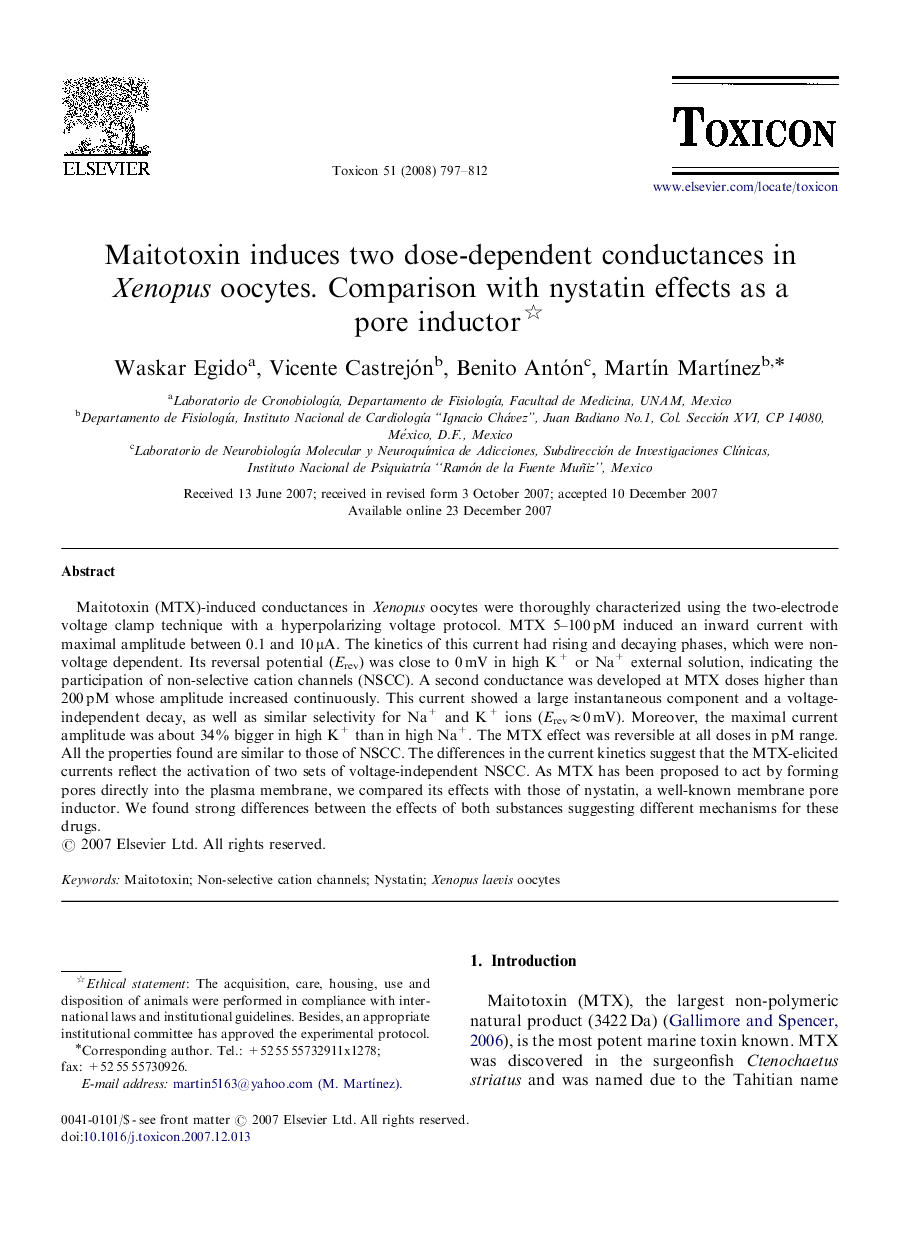| Article ID | Journal | Published Year | Pages | File Type |
|---|---|---|---|---|
| 2065701 | Toxicon | 2008 | 16 Pages |
Maitotoxin (MTX)-induced conductances in Xenopus oocytes were thoroughly characterized using the two-electrode voltage clamp technique with a hyperpolarizing voltage protocol. MTX 5–100 pM induced an inward current with maximal amplitude between 0.1 and 10 μA. The kinetics of this current had rising and decaying phases, which were non-voltage dependent. Its reversal potential (Erev) was close to 0 mV in high K+ or Na+ external solution, indicating the participation of non-selective cation channels (NSCC). A second conductance was developed at MTX doses higher than 200 pM whose amplitude increased continuously. This current showed a large instantaneous component and a voltage-independent decay, as well as similar selectivity for Na+ and K+ ions (Erev≈0 mV). Moreover, the maximal current amplitude was about 34% bigger in high K+ than in high Na+. The MTX effect was reversible at all doses in pM range. All the properties found are similar to those of NSCC. The differences in the current kinetics suggest that the MTX-elicited currents reflect the activation of two sets of voltage-independent NSCC. As MTX has been proposed to act by forming pores directly into the plasma membrane, we compared its effects with those of nystatin, a well-known membrane pore inductor. We found strong differences between the effects of both substances suggesting different mechanisms for these drugs.
